INDOOR PLANTS
Come explore our weekly rotating selection of houseplants to fit every home and lifestyle.
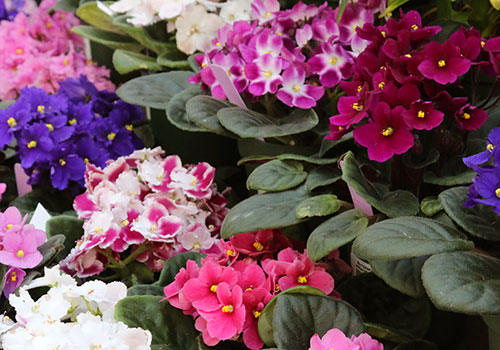
FLOWERING HOUSEPLANTS
Explore our rotating selection of indoor flower children, and be sure to use a good indoor fertilizer! Look for African Violets, Hoya, Kalanchoe, Gardenia, Clivia, Gloxinia, Hibiscus and more.
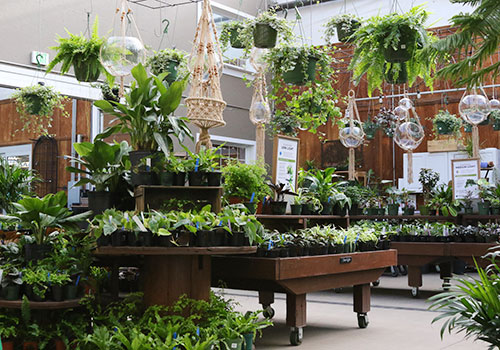
EASY CARE HOUSEPLANTS
These great beginner houseplants are hardy, forgiving and fast growing. Look for snake plants (Sansevieria), ZZ Plants (Zamioculcas), Dracaena, Pilea, Tradescantia and more.
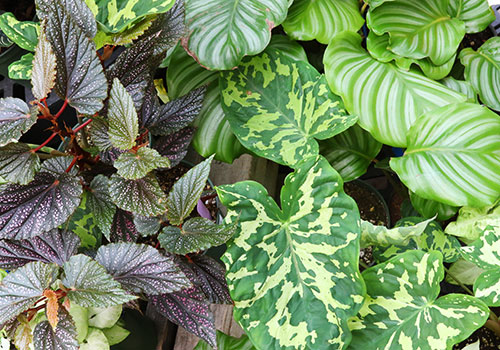
LEAFY HOUSEPLANTS
Bold and unexpected patterns, textures and shapes make these leafy greens something marvelous. Live in a tropical jungle with Calathea, Begonia, Monstera, Philodendron, and palms.
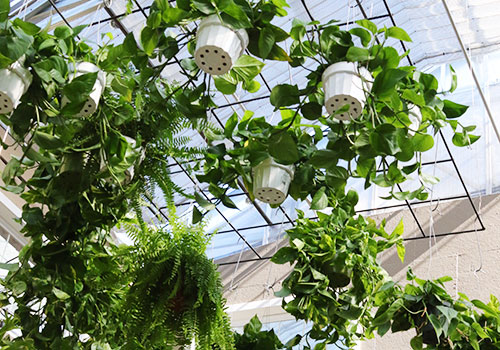
HANGING PLANTS
Pothos, lipstick plant, tradescantia, philodendron, ivy, hanging cacti, succulents and ferns are all regular indoor guests. Plus, ask about strings of hearts, pearls, and turtles.
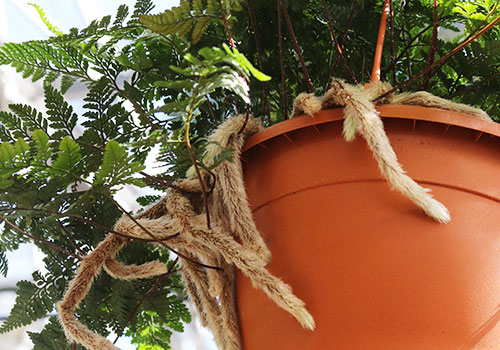
FERNS
Ferns can be notorious yet very rewarding houseplants. Ask for care tips when you explore our varied selection, including unique varieties like the rabbits' foot fern above.
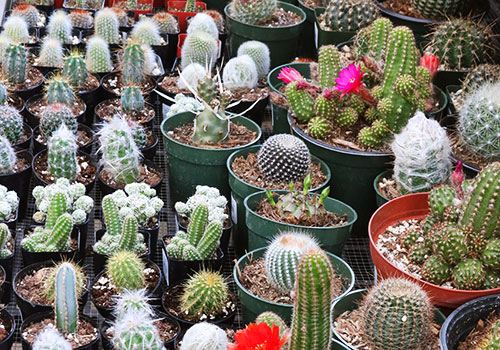
CACTI & SUCCULENTS
These plants thrive here in the PNW in a nice sunny spot or with a grow light. We offer a year-round selection, but look out for unique collector plants from Fleet Foot & Foul Weather!
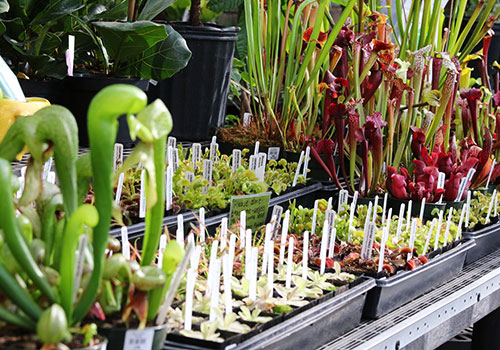
CARNIVOROUS PLANTS
We regularly see bug munching Sarracenia, pitcher plants (Nepenthes), sundews (Drosera), Venus fly trap (Dionaea), butterwort (Pinguicula), cobra lily (Darlingtonia) etc.
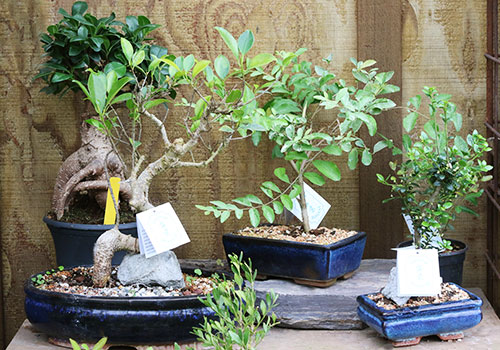
BONSAI
We carry a number of pre-trained indoor bonsai trees in ornamental pots that make great gifts or starter plants. We also have a huge selection of supplies to help you craft your own.

AIR PLANTS
Tillandsias are so low-maintenance, they don't even need soil to thrive, and flower! Their wooden shelves in our greenhouse are usually brimming with well-labelled and unique varieties.
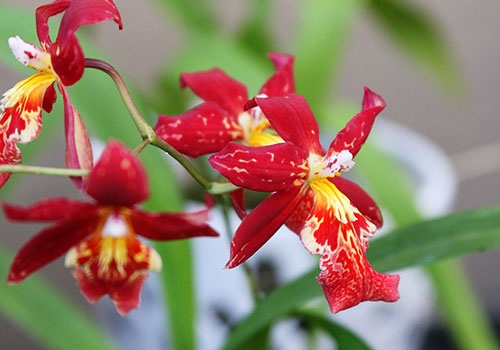
ORCHIDS
We receive bi-monthly shipments of popular moth orchids (which are a great variety for beginners) as well as collector varieties from our wonderful suppliers in Hawaii.
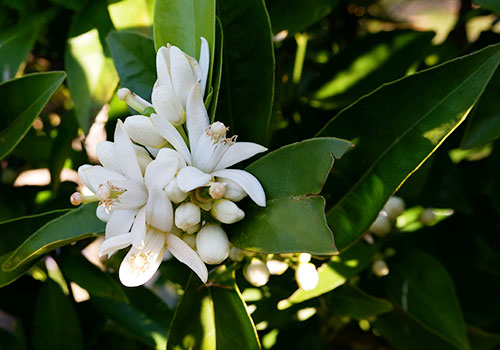
CITRUS TREES
We regularly stock a wide variety of limes, lemons, oranges, kumquats & more, even in the middle of winter! Be sure to speak to our houseplant staff for tips and tricks to help you succeed!
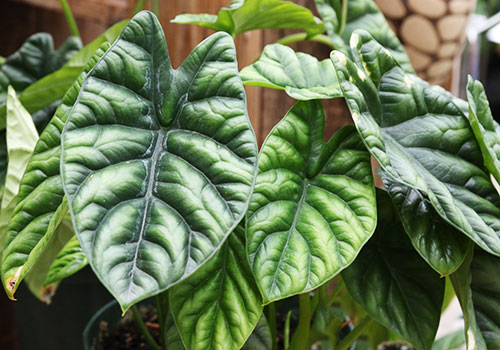
RARE VARIETIES
Look for rare and sought-after houseplants like anthurium, alocasia, string of hearts, and more. Interested in something specific? Give us a call to check availability.
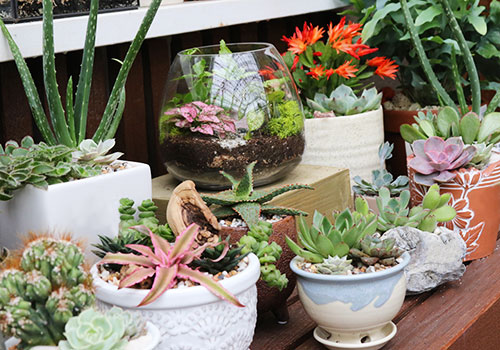
PRE-PLANTED ARRANGEMENTS
Artfully arranged containers make great gifts for birthdays, graduations, or even as sympathy and get well gifts. Explore our unique, handcrafted designs made by staff every week.
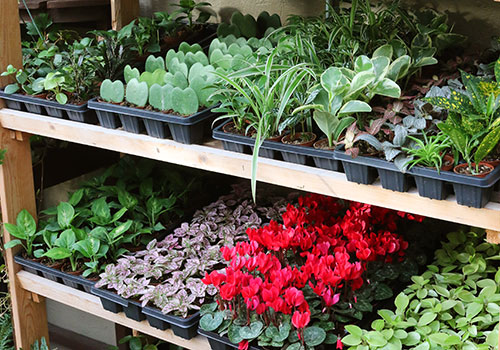
2" POT MINIS
These adorable houseplant babies are perfect for terrariums, gifts, and those who prefer to make, lower-risk investments in new plants. Look for weekly rotating selection.
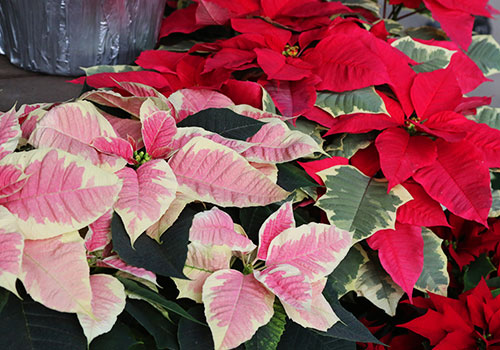
SEASONAL HOUSEPLANTS
Poinsettias and amaryllis for the holidays, Easter Lilies, spring and fall cactus, and clover for St. Patricks Day are all available just in time to celebrate the season!

PESKY HOUSEPLANT PESTS
The best treatment is always prevention, but sometimes, nothing can stop bugs from taking up shop. Learn how to eliminate pests safely and easily below.

PET SAFE PLANTS
Worried about a fur baby nibbling on your plants? Find a full list of pet-safe options & those toxic to cats, dogs, and even horses on the ASPCA website.
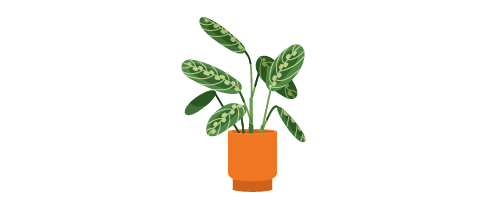
ON THE BLOG
From in-depth care instructions for carnivorous plants, tillandsia and more to help choosing the right plant for you, we've got lots to share!

Our selection is always changing, with fresh shipments arriving throughout the week. Please give us a call to check availability.
FREQUENTLY ASKED QUESTIONS
The two most important things to consider are light levels and your personal plant-parenting style. Being realistic about both of these from the beginning will help keep both you and your plants happy. Are you the kind of person who sometimes forgets to water your plants, or are you more of a helicopter plant-parent who is in danger of over-watering? What direction do your windows face, and how close to the windows do you want to place your plants? If you can answer those questions for us, we can help you find your perfect plant match.
Some plants can be harmful to dogs and cats when eaten. If you have curious critters in your home, we recommend checking out the ASPCA list of plants that are toxic and non-toxic for your pets, or coming in and asking which non-toxic options we currently have in stock. Potentially toxic plants can also coexist with your pets if you keep the plants out of their reach using shelves or hanging planters.
All plants need light, and regular indoor light-bulbs don’t have all the wavelengths of light that plants need. That said, you do have options. First, make sure you choose from plants that are as tolerant of low-light conditions as possible, such as snake plant, zz plant, peace lily, and cast iron plant. These tough cookies can survive for a while without any natural light, but they won’t thrive for long. You could rotate several of these plants between your windowless room and a space with more light weekly, or you could add artificial full-spectrum light.
Often, Fungus Gnats are more an annoyance than anything else, but a large infestation can start to do damage to your plants. Most potting soils, especially organic brands include beneficial fungi that help our plants, but can also attract gnats under moist conditions. You can limit the wet conditions gnats need by using pots with good drainage and allowing plants to dry out between waterings whenever possible. Adding an inch of sand to the top of your pots can also prevent gnats by making it impossible for them to emerge from the soil or lay their eggs. If you want to go on the offensive, systemic pesticides or non-toxic sticky traps will also do the job.
Most indoor plants should be fertilized every 2-6 weeks during their active growing season, depending on the type of fertilizer you choose. Liquid fertilizers are easy to apply as part of your regular watering schedule. Fertilizer provides plants with the nutrients they need to grow and thrive. However, most plants take a break from active growth from November-January, and it’s good to let them rest. Hold off on fertilizing for these winter months so your plant can rest up and be ready to grow beautifully in the spring.
